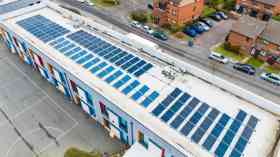Established in 1981, Micro Computer Consultants Limited (MCC Digital) are one of the UK’s most experienced Apple Authorised Education Speci
Supplier Focus
Latest Supplier News
Borg & Overström is a UK manufacturer of premium drinking water solutions. For over 20 years Borg & Overström has developed sustainable, bottle-less, hygienic, drinking water dispensers with the aim to provide exceptional, safe, self-service drinking water into schools, universities, workplaces and communal spaces.

 Improving energy efficiency in schools does not mean compromising the comfort of staff and students. In many cases, implementing some simple energy saving measures actually improves conditions, as well as saving money.
Improving energy efficiency in schools does not mean compromising the comfort of staff and students. In many cases, implementing some simple energy saving measures actually improves conditions, as well as saving money.








